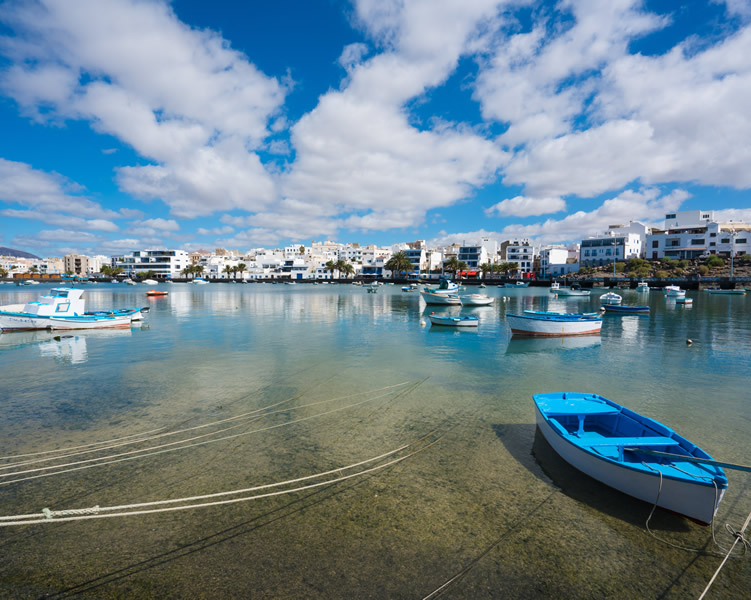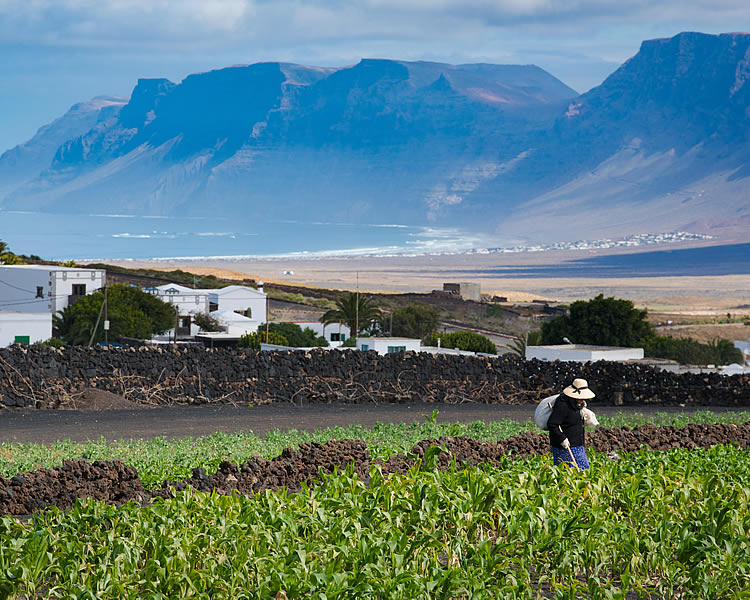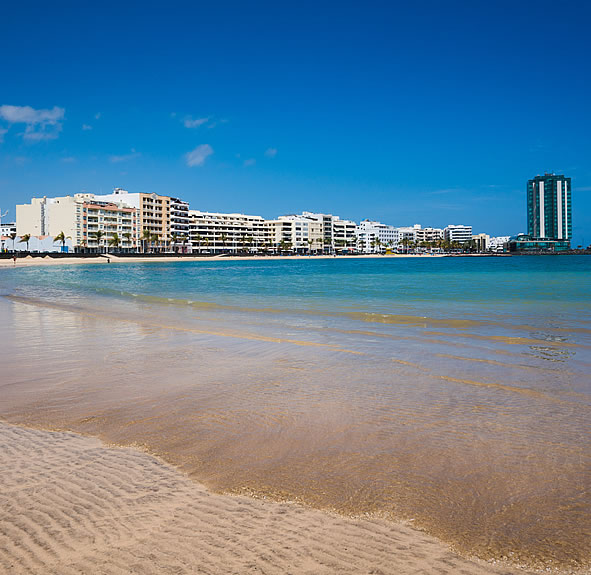Thinking about buying property in Lanzarote? The Canary Islands known locally as "Islas Canarias" are made up of 7 main islands Tenerife, Fuerteventura, Gran Canaria, Lanzarote, La Palma, La Gomera and El Hierro. In Ancient times, the island chain was referred to as "Insulae Fortunatae" (The Fortunate Islands), simply because of the geographical location and being a winterless earthly paradise.
Annexed by Spain in the 15th Century, the Canary Islands are still part of Spain, however, it has a fiercely independent streak with it's own Government. We enjoy the benefit of EU membership, but we also have our own taxation system as well as duty free status.
Located in the Atlantic Ocean, just 125 kilometres (78 miles) west of the Saharan Coast of Africa, Lanzarote has often been called the "Island of Eternal Spring" it is one of the Canary Islands which has a subtropical-desert climate with the temperature rarely falling below 12 degrees on a winters night and hitting heights of 40 degrees on a mid-summers day.
Lanzarote is a starkly beautiful product of one of the most important volcanic eruptions in history, offering stunning mountain, volcano and sea views. The island is 77 kilometres (48 miles) long and one is never far from the sea.

It is estimated that Lanzarote was the first Canary Island to be settled. In 1000 BC it was settled by the Guanche people, who remained there until their extinction by Spanish colonialism in the 15th Century. The first recorded name for the island was "Insula de Lanzarotus Marocelus" which is where the modern name is derived from. The island's name in the native language was Tyterogakat or Tytheroygatra, which is believed to mean "one that is all ochre" (referring to the island's predominant colour).
Modern day Lanzarote has a population of around 145,000 (recorded 2016), with a proportion of foreign residents. A large part of the islands income is derived from tourism, with more than 2 million visitors each year and increasing steadily. The Islands Cabildo (Local Government) has striven for decades to create a sustainable tourism, resisting the urge to go down the "High Rise" route used in places such as Costa del Sol. Much of this work can be attributed to César Manrique, Lanzarote's most famous son.
Every year the island celebrates many festivals, Carnival being one of the biggest that usually takes place between February and March. September 15th is a very important day for the people of Lanzarote, as it is a day to honour "La Virgin de los Dolores" who is the Patron Saint of Lanzarote. A pilgrimage known as the "Romaría" takes place from all over the island to the village of Mancha Blanca where many celebrations take place.

Towards the North of the Island is Costa Teguise, known as Lanzarote's family resort. It is home to a fabulous selection of bars, shops and restaurants. The beaches range from secluded bay areas to long stretches of sand, it is not uncommon to see a horizon of windsurf sails and scuba dive boats. Costa Teguise is also known for it's 18 hole golf course complete with driving range and putting green. There are both international and local schools within the resort.
Puerto del Carmen is one of Lanzarote's tourist hotspots. This busy area stretches for 8km and is split into four parts. Closest to the airport is Matagorda with it's shopping plaza taking centre stage. Matagorda blends into the Los Pocillos area where the beach stretches out before reaching the sea. The main area is known locally as "the strip", this is a tourist haven of bars, shops and restaurants. Then we come to the Old Town with its harbour front restaurants and bars.
On the Southern tip of the Island is Playa Blanca with its ferry crossing to the Island of Fuerteventura. Playa Blanca has a good selection of waterfront bars and restaurants as well as a selection of shops, bars and restaurants in the main street. Home to Marina Rubicon where the rich and famous come to moor their yachts there is also the Atlantic Museum which is the first underwater museum of the Atlantic Ocean and Europe. It is located about 300 meters from Marina Rubicon on the beach of Las Coloradas. The beaches of Papagayo offer you coves of white sand and crystal clear waters, they are credited with being some of the best on the Island. Ideal for those who enjoy snorkelling.
